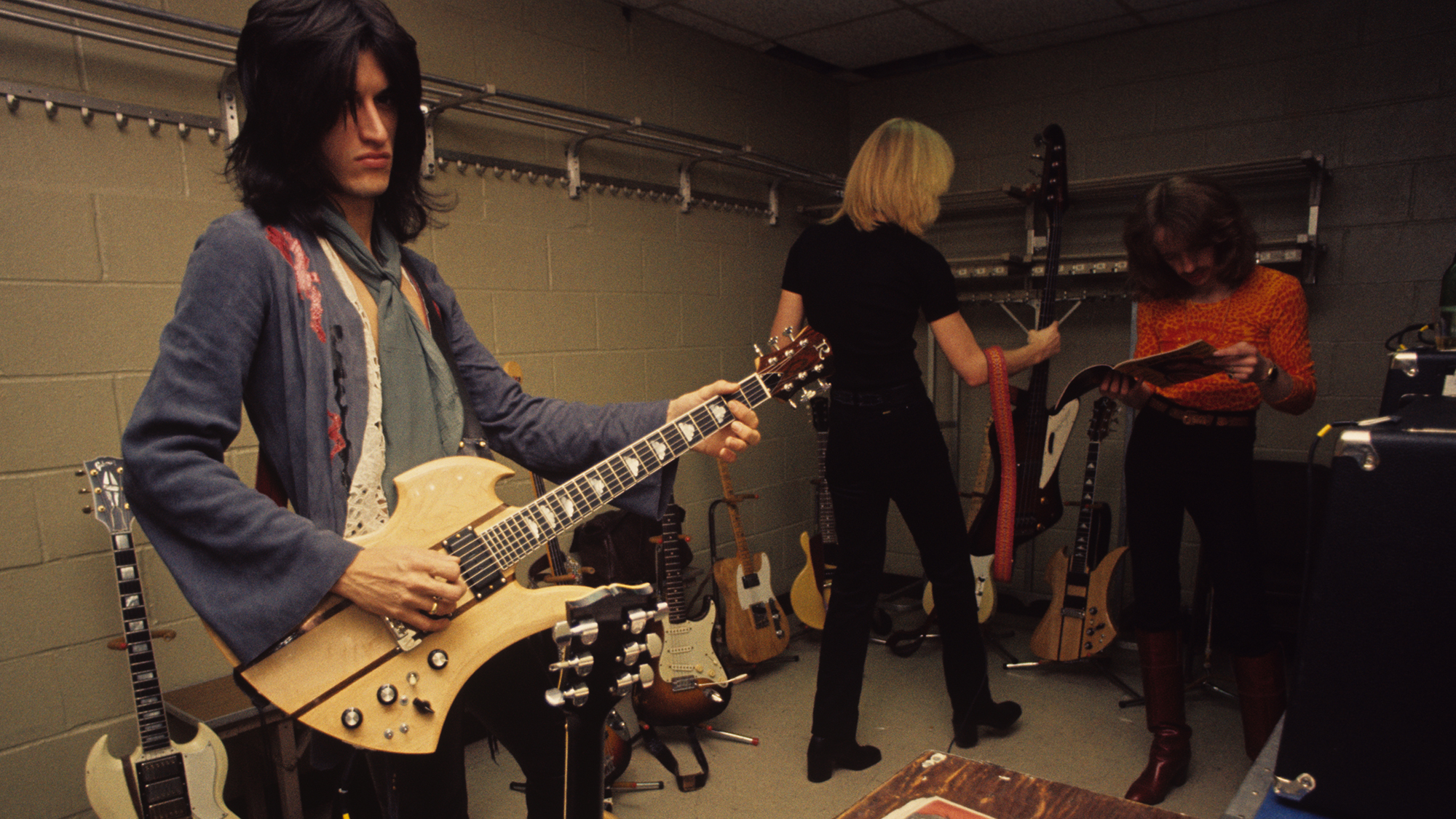“We were underdogs that still had to prove ourselves.” Aerosmith feared their label would drop them if 'Toys in the Attic' wasn’t a success. Fifty years on, Joe Perry discusses the riffs that saved them from oblivion
After two under-performing albums that had seen their well of songs run dry, Aerosmith found inspiration from unlikely places and turned their fortunes around

Aerosmith’s Joe Perry may have surprised readers when he picked 1975’s Toys in the Attic as one of the 10 records that changed his life. There it was, taking its place alongside classic cuts from electric guitar pioneers like the Yardbirds, Chuck Berry, and Jeff Beck.
But Perry had good reason for choosing it. After all, Aerosmith's career rested on the album's success. It was, in the most literal sense, life changing.
Released on April 8, 1975, Toys in the Attic is the album that brought Aerosmith to the forefront of rock radio. A year on the road touring behind its predecessor, Get Your Wings, had helped the group improve their performance and brought new energy into their songs and riffs. Toys in the Attic would prove to be nothing less than their coming-of-age record.
“It took us a while to get rolling,” Perry acknowledges. “We had to be on the road all the time. We’d pound the pavement and be out on the boards. Then we’d get six weeks off, maybe two weeks to write new music, three weeks to cut a record, and then we’d get back on the road. That’s what it was like for Aerosmith.”
The grind could take its toll on occasion, as it did during Get Your Wings, when session guitarist Steve Hunter was called on to provide some six-string assistance. While that album performed better than the group's 1973 self-titled debut, both fell short of Columbia Records' expectations. They feared Columbia Records was sharpening its axe. Album three had to be a hit.
Unfortunately, when it came to songs, the group was starting over from scratch.
“After the first two records, which had songs that we basically played in clubs, we used up all of them,” Perry told Guitar Player last year.
All the latest guitar news, interviews, lessons, reviews, deals and more, direct to your inbox!
They needed inspiration, and it was going to have to come from somewhere. Perry found it by trusting his instincts.
"You have to let the thinking part of your brain loose and let your subconscious take over," he says. "It's an exercise in getting a connection to your heart and soul, and, sometimes, these riffs just come out."
It was in that mindset that he forged one of the most successful songs on Toys in the Attic: “Walk This Way.” As Perry recalls, the tune came together spontaneously with some assistance from drummer Joey Kramer.
“I was thinking of some of the funk that I really liked and thought, Let's see if we can get something that's got that kind of groove,” he says. “We were in soundcheck in Hawaii, and I asked Joey to just play straight, funky twos and fours while I started working on a riff.
"The first part was basically the verse, and then, you need a place to go, and I changed from down to the E chord from a C. Every chord change needed a little signature to it, like a little bit of a riff. By the time I finished the soundcheck, I pretty much had all the parts.”
All it was missing was a vocal hook, which, unusually, came from the silver screen. Needing a break from the studio the band — minus Perry, who remained at the studio — went to see Young Frankenstein. The Mel Brooks comedy features a scene based on an old vaudeville visual gag, in which comedian Marty Feldman, as Igor, instructs Gene Wilder, as Dr. Frankenstein, to "walk this way." Frankenstein assumes he means "follow me," but Igor demonstrates that he wants him to walk as he does, with a limp and assisted by a stubby cane.
Perry says the group was still laughing about the line when they returned. "Steven said, 'Okay… walk this way. I think that's what I needed.'”
The genesis of the record's title track, meanwhile, proved that inspiration can strike at any time.
“We finished rehearsing up in Boston [before heading to the studio], and the guys were pulling some gear out, you know, Marshalls and stuff,” Perry remembers. “I sat on one of the 4x12s and just started jamming a little bit. After a couple of minutes, I had that beginning riff from 'Toys in the Attic.'
"I said, ‘I kind of like that,’ and again, you need a place to go. That's when I came up with the riff for the vocal, so I had those two parts. The next time the band got together, we worked it out. Everybody threw down.”
We were just fucking kids. It took us a couple of albums to figure things out.
Joe Perry
The record's success wasn't just down to Perry's creativity and ear for hooky riffs. As demonstrated by "Sweet Emotion," the opener to the record's second side, bass player Tom Hamilton had plenty to contribute as well.
“The smallest element can be the basis of a cool riff, and that can be the basis of a whole song," Hamilton explained to Bass Player. "That was pretty much how I wrote 'Sweet Emotion' — the bass intro was the first thing that came along.
“That middle riff that comes between the verses was actually inspired by Jeff Beck's Rough and Ready,” he continues. “We had this crude sound system in our apartment; everyone would latch onto a particular record and play it for days, and Rough and Ready was one of those. I’d get the basic feeling of a record in my head and then I’d want to spit it back out. I wrote pretty much all of the bass and guitar parts for ‘Sweet Emotion.’”
And while Perry and co-guitarist Brad Whitford were devoted Gibson Les Paul players onstage, they often preferred to mix it up with a Fender Stratocaster in the studio. On Toys in the Attic, the two six-string heavyweights worked in perfect harmony.
"I would say with a fair amount of confidence I used a Les Paul on 'Toys in the Attic.' I would bet that at least one of my tracks on 'Walk This Way' is a Les Paul, and then everything I did after that was with the Strat," Perry revealed to Total Guitar.
"I was definitely a stone-cold Gibson man, but I seemed to gravitate more toward Strats and that variety of tones. Plus you had the vibrato… I always felt like it was one more color on your paint palette.”
With their backs against the wall, Aerosmith saved their career, learned some crucial lessons and came out the other end swinging.
“We were just fucking kids,” Perry reflects. “It took us a couple of albums to figure things out." Despite a couple of early hits with "Dream On" and "Train Kept A Rollin'," he says Aerosmith were struggling to break out.
"People had heard of us, but we were still playing clubs. We were these underdogs that still had to prove ourselves. On this record, we were rolling in the big time."
A freelance writer with a penchant for music that gets weird, Phil is a regular contributor to Prog, Guitar World, and Total Guitar magazines and is especially keen on shining a light on unknown artists. Outside of the journalism realm, you can find him writing angular riffs in progressive metal band, Prognosis, in which he slings an 8-string Strandberg Boden Original, churning that low string through a variety of tunings. He's also a published author and is currently penning his debut novel which chucks fantasy, mythology and humanity into a great big melting pot.





